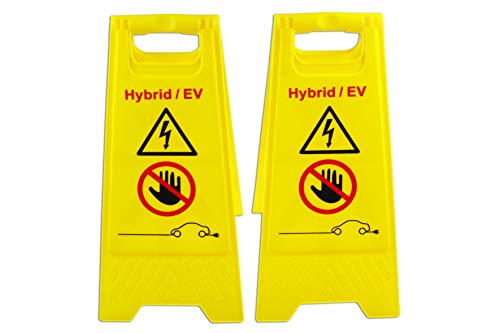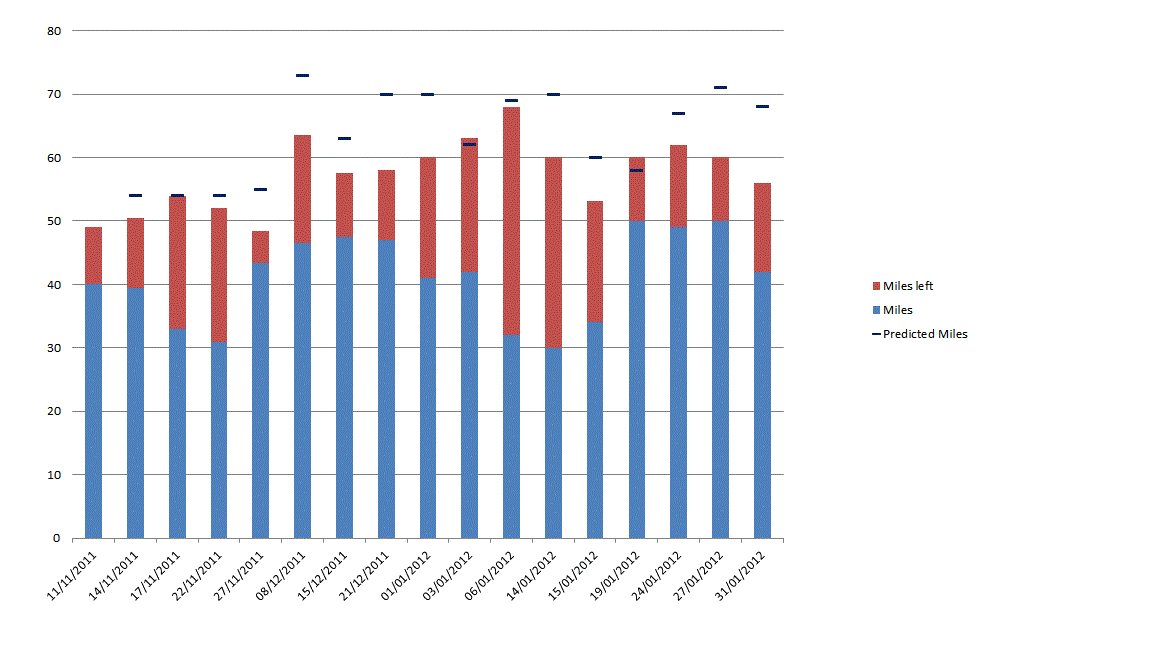MtnViewMark,
Here's the data (version 5)
iChart:iMiev Range in MILES v5 – John Annen
MPH . . . 35 40 45 50 55 60 65 70 75
BARS %
16 100 100 90 83 73 67 62 56 52 47
15 . 94 . 94 84 76 67 61 56 50 46 41
14 . 87 . 87 72 71 62 57 52 57 43 39
13 . 81 . 81 72 66 59 53 49 44 41 36
12 . 72 . 72 64 58 51 57 43 39 36 33
11 . 66 . 66 58 53 47 43 40 36 34 31
10 . 60 . 60 52 47 41 38 34 30 28 27
..9 . 56 . 56 49 44 39 36 33 29 26 24
..8 . 50 . 50 47 41 37 35 31 27 24 21
..7 . 44 . 44 37 33 29 26 24 21 20 18
..6 . 37 . 37 31 27 23 21 19 17 15 14
..5 . 31 . 31 26 22 18 16 14 12 11 10
..4 . 25 . 25 21 18 15 14 13 14 12 . 9
..3 . 19 . 18 18 15 14 13 12 10 . 9 . 7
..2 . 12 . 12 12 10 . 9 . 9 . 8 . 7 . 6 . 5
..1 . .6 . . 6. . 6 . 5 . 5 . 4 . 4 . 4 . 3 . 3
1. Subtract one Bar for each 20 minutes of A/C.
2. Subtract one Bar for each 40 minutes of heat.
3. The range below Bar 1 is reduced by battery cell imbalances. The i needs
to be charged to 100% to rebalance the cells. The REBALANCE is most
important after several less than 100% charges. The i can go 6 miles in
turtle mode if the cells are balanced. Don't count on it.
4. Add One mile at 60mph for every 15 min. charge on 120V 8A iCharger
5. Add One mile at 60mph for every 5 minutes of 240V, 16amp charger
6. Wind speed is more important than ground speed for calculating range.
50mph with 10mph headwind equals 60mph range in the iChart.
7. Add 1% to range for each 4° F above 70° F
8. Subtract 1% in range for each 2°F below 70° F
9. Subtract 2% in range for every 10,000 miles for Battery Degradation.
10. Increase range 1.5% per 1000 ft/300m for air density above sea level
11. Heavy loads get less range than light loads.
12. Wind load goes up as the third power of wind speed. Twice the
speed (mph) creates 8x the wind resistance.
13. Rain decreases range.
The formatting looks better with version 5 at:
http://www.facebook.com/media/set/?set=a.2790482153603.2125305.1004832596&type=1&l=51a8b1aa1f
I am still try to make the table more accurate.
-- John Annen


























